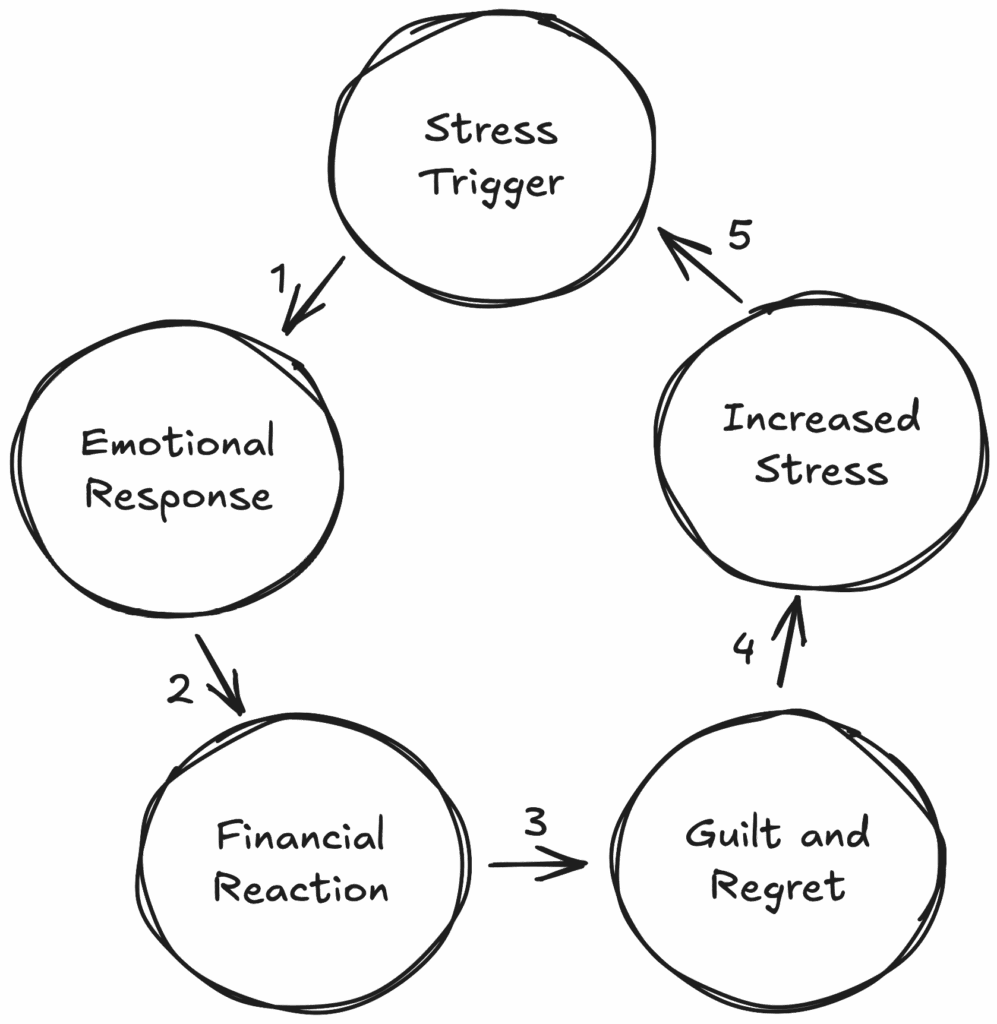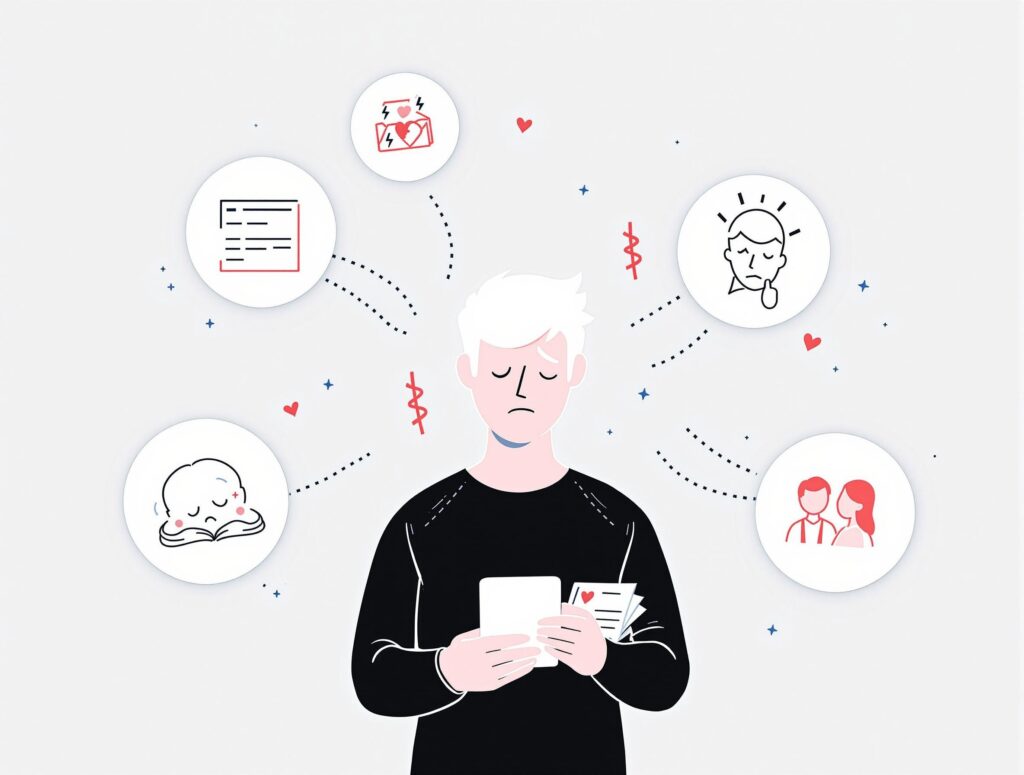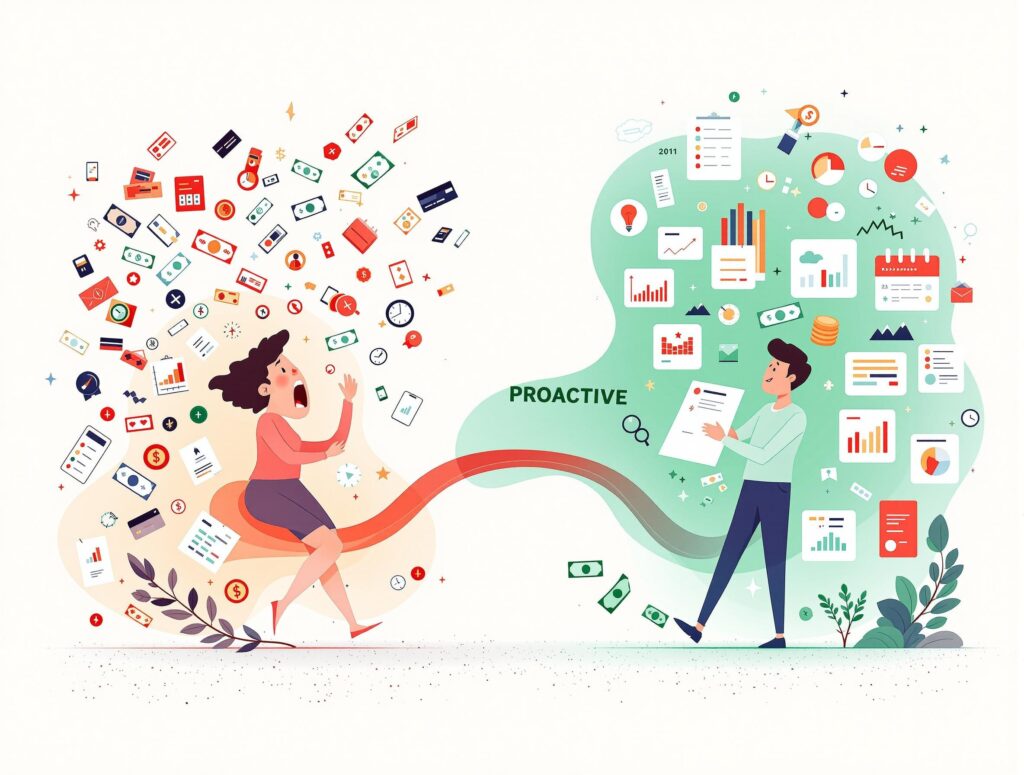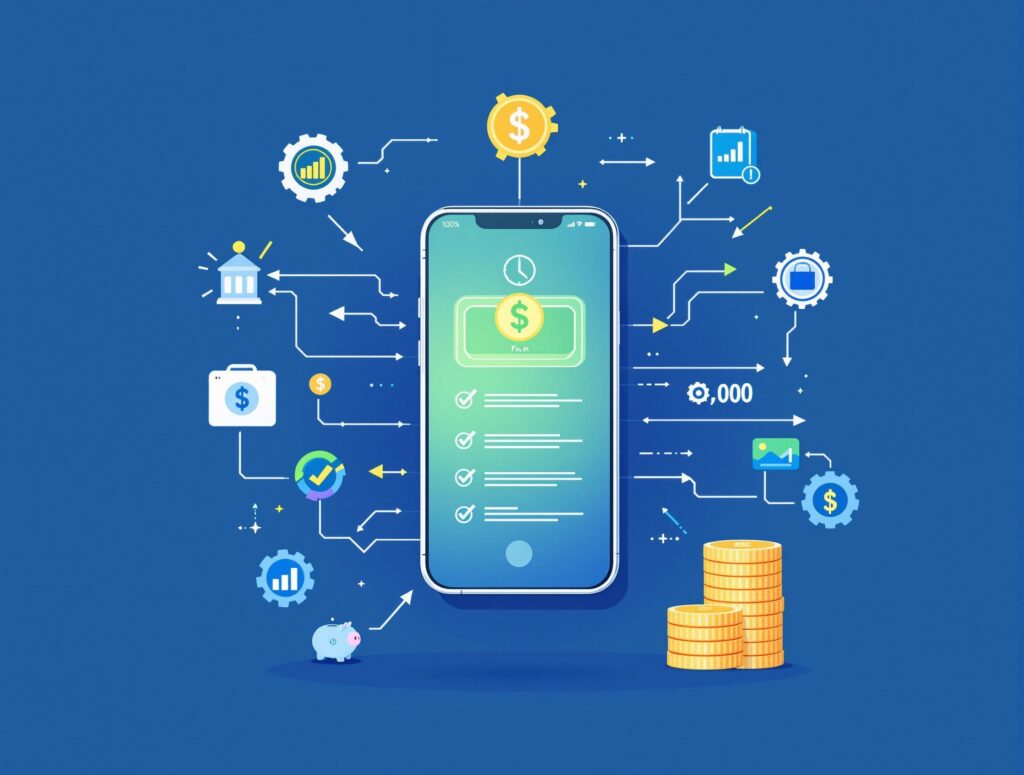We’ve all been there – that moment when stress hits and suddenly we’re standing in line at the store with a cart full of things we don’t really need. Or maybe it’s the opposite: we’re so anxious about money that we can’t bring ourselves to spend on anything, even necessities. Welcome to the emotional money cycle, where our feelings drive our financial decisions more than logic ever could.
Recent research shows that financial stress affects over 70% of adults, creating a vicious cycle where money worries lead to poor spending decisions, which then create more financial stress. But here’s the good news: understanding this cycle is the first step to breaking free from it.
The Hidden Psychology Behind Your Spending Habits
Your brain doesn’t distinguish between a charging lion and a mounting credit card bill – both trigger the same stress response. When we’re stressed, our prefrontal cortex (the rational decision-making part of our brain) essentially goes offline, while our emotional centers take control.

This is why you might find yourself buying that expensive gadget after a tough day at work, or why you impulse-purchase comfort food when you’re feeling overwhelmed. It’s not a lack of willpower – it’s biology.
Common stress spending triggers include:
- Work pressure and deadlines
- Relationship conflicts
- Health concerns
- Social media comparison
- Boredom or loneliness
- Celebrating achievements
- Feeling deprived or restricted
But stress spending isn’t just about retail therapy. Sometimes stress makes us freeze up completely, leading to “analysis paralysis” where we can’t make any financial decisions at all – even beneficial ones like investing or switching to a better bank account.
The Vicious Cycle: How Stress Creates More Stress
Here’s how the emotional money cycle typically works:

Step 1: Stress Trigger → Something stressful happens in your life
Step 2: Emotional Response → You feel anxious, sad, angry, or overwhelmed
Step 3: Financial Reaction → You either spend impulsively or avoid financial decisions entirely
Step 4: Guilt and Regret → You realize you’ve made a poor financial choice
Step 5: Increased Stress → Now you have the original stress PLUS financial worry
Step 6: Repeat → The cycle continues, often getting worse over time
Step 1: Stress Trigger → Something stressful happens in your life
Step 2: Emotional Response → You feel anxious, sad, angry, or overwhelmed
Step 3: Financial Reaction → You either spend impulsively or avoid financial decisions entirely
Step 4: Guilt and Regret → You realize you’ve made a poor financial choice
Step 5: Increased Stress → Now you have the original stress PLUS financial worry
Step 6: Repeat → The cycle continues, often getting worse over time
This cycle is particularly dangerous because it compounds. Each poor financial decision adds another layer of stress, making you more likely to make poor decisions in the future. It’s like financial quicksand – the more you struggle, the deeper you sink.
The Hidden Health Cost of Financial Stress
What many people don’t realize is that this emotional money cycle isn’t just hurting your wallet – it’s literally affecting your physical and mental health.

Studies show that financial stress can lead to:
- Sleep problems (72% of financially stressed adults report sleep issues)
- Anxiety and depression (financial stress is linked to a 50% increase in anxiety disorders)
- Relationship problems (money is the #1 cause of relationship conflicts)
- Physical health issues (headaches, high blood pressure, digestive problems)
- Decreased work performance (financial stress reduces productivity by up to 30%)
The irony? These health and relationship problems often create more expenses, perpetuating the cycle. It’s a perfect storm of stress, spending, and suffering.
Breaking Free: From Reactive to Proactive

The key to breaking the emotional money cycle isn’t to eliminate emotions from financial decisions (that’s impossible), but to create systems that work WITH your psychology, not against it.
1. Create Emotional Speed Bumps
Before making any purchase over a certain amount (start with $50), implement a 24-hour waiting period. This gives your rational brain time to come back online. For smaller purchases, try the “10-breath rule” – take 10 deep breaths before buying anything.
2. Identify Your Trigger Patterns
Keep a simple “spending emotions journal” for one week. Before every purchase, write down:
- How you’re feeling (stressed, happy, bored, etc.)
- What triggered that feeling
- Whether the purchase was planned or impulsive
You’ll start to see patterns emerge. Maybe you always overspend after difficult phone calls with family, or perhaps you shop when you’re procrastinating on work projects.
3. Build Your Financial Stress Buffer
Nothing reduces financial stress like having a buffer. But here’s the twist: start ridiculously small. Instead of trying to save $1,000 right away (which can feel overwhelming), start with $1 per day.
Put that dollar in a separate “stress buffer” account. After 30 days, you’ll have $30 – not life-changing money, but enough to handle a small unexpected expense without panic. More importantly, you’ll have built the habit and confidence to keep growing it.
4. Transform Stress into Saving Energy
Here’s a counterintuitive strategy: when you feel the urge to stress-spend, immediately transfer that same amount to your savings account instead. Feeling the urge to buy a $40 shirt because you’re stressed? Transfer $40 to savings.
This technique works because it satisfies the emotional need to “do something” with your money while actually improving your financial situation. It’s like financial aikido – using the force of your emotions to your advantage.
The Power of Automated Wellth
One of the most effective ways to break the emotional money cycle is to remove emotions from the equation entirely through automation. Set up automatic transfers to savings, automatic bill payments, and automatic investments.

When your money moves automatically, you can’t make emotional decisions about it. Your stressed brain can’t sabotage what it doesn’t control.
Start with these three automations:
- Automatic savings – Even $25 per week adds up to $1,300 per year
- Automatic bill payments – Eliminates the stress of remembering due dates
- Automatic investment – Dollar-cost averaging removes the emotion from market timing. Whether you’re investing in index funds, Bitcoin, or other assets, consistent automated investing helps you avoid the emotional rollercoaster of trying to time the market.
Creating Your Stress-Saving Toolkit
Build a personalized toolkit of healthy responses to financial stress:
Instead of stress shopping, try:
- Going for a walk (free and healthy)
- Calling a friend (connection without cost)
- Doing a 10-minute meditation (apps like Headspace have free options)
- Organizing something in your home (productive and satisfying)
- Cooking a meal from ingredients you already have
Instead of financial avoidance, try:
- Setting a timer for just 5 minutes to review your accounts
- Focusing on one small financial task (like organizing receipts)
- Celebrating small wins (like paying a bill on time)
- Asking for help from a trusted friend or financial advisor
The Compound Effect of Emotional Financial Health

Here’s what happens when you successfully break the emotional money cycle:
Month 1-3: You start catching yourself before stress spending and building small savings
Month 4-6: Your stress buffer grows, reducing anxiety about small emergencies
Month 7-12: You develop confidence in your financial decision-making
Year 2+: You’ve created a positive cycle where good financial decisions reduce stress, making it easier to make more good decisions
The compound effect works both ways – just as negative financial emotions can spiral downward, positive financial habits create an upward spiral of confidence, security, and wellth.
Your Next Steps: From Stress to Success
Breaking the emotional money cycle isn’t about becoming a emotionless robot with your finances. It’s about creating systems that honor your humanity while protecting your financial future.
This week, try this:
- Choose ONE emotional spending trigger to focus on
- Set up ONE automatic transfer to savings (even $5 per week counts)
- Practice the 24-hour rule on ONE purchase you’re considering
Remember, every financial decision is an opportunity to either feed the stress cycle or break free from it. The choice is yours, and it starts with the very next dollar you spend or save.
The path from stress spending to stress saving isn’t about perfection – it’s about progress. Every time you pause before an emotional purchase, every dollar you save instead of spend, every automated system you create, you’re building a stronger, more resilient financial future.
Your future self will thank you for breaking the cycle today.


